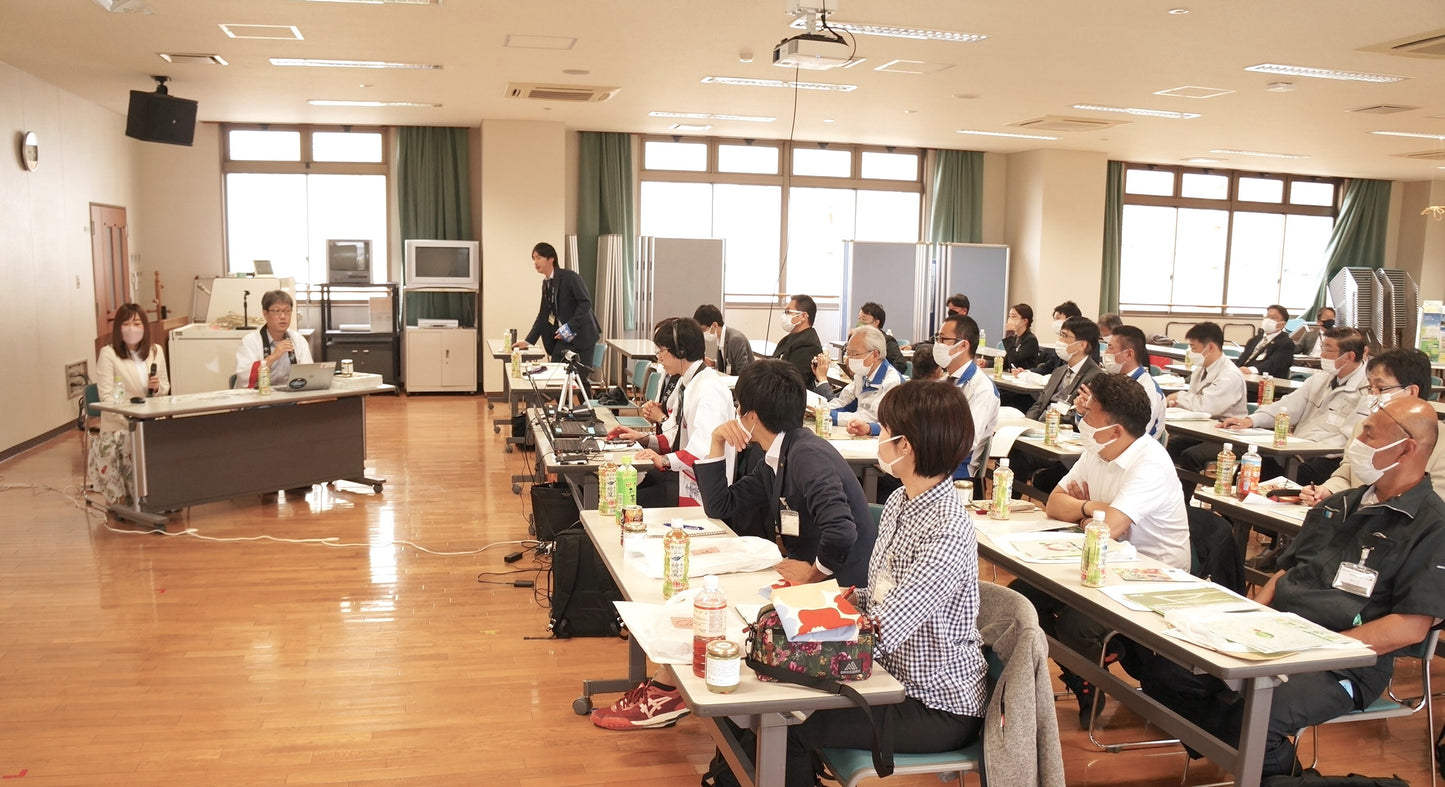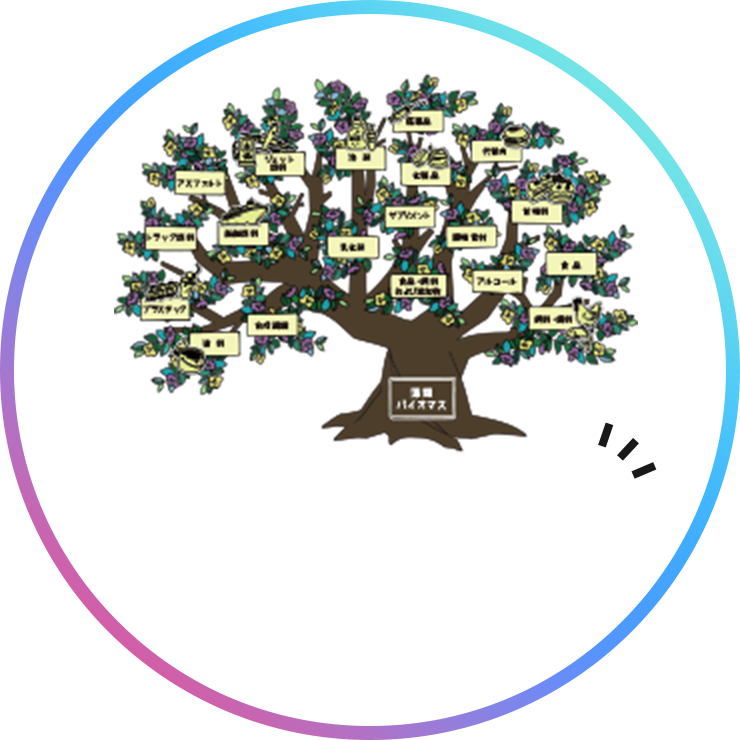

Honda and MATSURI's Future with "Algae"

Honda was the first company in the automotive industry to focus on algae in its quest to become carbon neutral.

Honda has developed "DREAMO" and the aim is to cultivate algae in large quantities.

Honda and CHITOSE, which has the world's largest algae production facilities are working together to revitalize and expand the algae industry at MATSURI project.
\ This is how the "power of algae" enriches our lives./
This is how the "power of algae"
enriches our lives.

member
-
Honda R&D Co., Ltd.
Nozomi Fukushima
-
MATSURI Founder
Takanori Hoshino
Partner
-

Saga City
-
Honda R&D Co., Ltd.
Member
-
Honda R&D Co., Ltd.
Nozomi Fukushima
-
MATSURI Founder
Takanori Hoshino
Partner
-

Saga City
-
Honda R&D Co., Ltd.

My name is Nozomi Fukushima, and I am from Honda R&D Center in Tochigi Prefecture. I am very nervous today because we are gathered here today with professionals from various industries, and Mr. Hoshino is the R&D person whom I respect the most outside the company since I got to know him about 10 years ago. Please accept my best regards.
Aiming to solve other issues as well as fuel

As the table of SDGs shows, there are many challenges that humanity needs to solve. To solve the issues, we cannot solve even a single issue if we work on only one issue. For example, I believe that not only energy issues, but also poverty, food problems, and many other issues must be addressed together, and we must all move in the direction of solving them together, even if only step by step.

This is actually a take-off from Mr. Hoshino. At the time I met Mr. Hoshino, our company was originally thinking only of using algae to make fuel. I asked Mr. Hoshino, "When I say food problem, I don't just mean that there is not enough food, but also the protein crisis. We need to think about the problem of protein shortages around the world," he instructed me. Since then, we have had this desire to use algae to bring not only fuel but also the protein abundant in algae to the children of the world.

Carbon recycling rather than carbon neutral

As you are probably aware of global warming caused by increased CO₂ gas emissions, there are various ways to capture CO₂ gas released into the atmosphere: Direct Air Capture (DAC), which captures it directly from the air; absorption by plants and algae through photosynthesis; and other methods. and so on. If the CO₂ originally emitted is 1, it is reduced to 0 by using algae grown by absorbing CO₂ and converting it into something valuable, such as fuel, resin, or foodstuff. Then it returns to 1 when it is used again. This is carbon neutral technology. Repeatedly going carbon neutral does not change the amount of CO₂ on the earth.

CO₂ collected by DAC (Direct Air Capture) can be carbon negative if buried deep underground, but in the case of microalgae, it can be carbon recycled by making electricity through photosynthesis and producing chemical substances to produce valuable products. What kind of things can be produced: functional materials that can be used for fuel and industry, food rich in protein, carbohydrates, glycerol, and fatty acids, feed, medicine and supplements, and most other raw materials that have used fossil fuels in the past. So we are not a carbon neutral or negative team, but a "carbon recycling" team that aims to create fuels, food, and other valuable products from CO₂.

The great thing is not only that it is carbon recycling. For example, when we consider the replacement of raw materials, if we consume protein from algae instead of chickens, cows, or pigs, which we eat now, we can reduce CO₂ emissions by 23.1kg for 1kg of protein source because algae can be produced very efficiently compared to livestock or agriculture. Therefore, although it is not carbon neutral, it has a very high CO₂ reduction effect. The same is true when ethanol fuel is used in place of gasoline. If ethanol is produced from algae, the amount of CO₂ emissions can be reduced to about one-fifth that of gasoline. Thus, the replacement of raw materials makes it possible to reduce CO₂ emissions.
Utilize each company's strengths to solve issues

There are challenges to producing algae. For example, the amount of CO₂ emitted during the production process must be less than the amount of CO₂ absorbed by the algae. Also, since photosynthesis is carried out by direct exposure to sunlight, the temperature rises too high in Summer and, conversely, falls too low in Winter. Contamination (contamination by other algae or bacteria), and so on. There are many other challenges.

We also have a culture facility on the equator in Sarawak, Malaysia, which was recently completed, but we are still facing the same problems such as excessive temperatures and contamination, and we have to solve them one by one every day. But every time we solve one problem, we gain experience in the technology and overcoming problems. We are in the process of building more and more technical barriers. On the other hand, it is very informative and interesting to hear about how Honda and the other participants today who have experience in algae cultivation are solving problems with their technologies.

Some of the issues are being tackled by utilizing our manufacturing technologies, and we realize the value we can provide because we are a manufacturing company. We have devised a culture system that does not require energy to adjust temperature in order to reduce process CO₂ emissions, and we are also working to develop technology to recycle culture medium without reducing production volume. Dreamo is resistant to contamination, has a very high amino acid score, and has almost the same nutritional value as meat. We are considering ways to utilize these characteristics to create value that is not only economical but also useful to the world.

Our plant in Malaysia is very busy dealing with contamination every day. I think it is wonderful that you are able to control contamination so well at your plant, and I would like to ask you about your skills and techniques. If anyone have any experience in outdoor culture, they know that this is a very important point, and I think it is is critical issue whether contamination can be controlled or not in outdoor culture.
After this, Ms. Fukushima, Mr. Hoshino, and the participants engaged in a lively discussion about the challenges experienced by each company in algae cultivation and how they responded to them. The discussion was lively, with some topics bordering on trade secrets, such as, "I can't answer that question".
Is sunlight alone not enough for true carbon neutrality?

There is a theory that in order to achieve true carbon neutrality, it is necessary to use LED light from renewable electricity because sunlight is not efficient enough for production. I'd like to hear your thoughts on this.

Let me first comment on my opinion, I don't think it is necessary at all. Even without supplemental light from LEDs, the light that is currently falling on the ground is more than enough for production. It is said that photosynthetic efficiency of, for example, 10% or 13% can be used, but if we can achieve only 1%, 2%, or 3%, it is more than enough to replace the current light. I believe that we can reach the point of carbon neutrality. I am not just saying that I think so, but I am sure that the calculations will show that.

I also think the same way. I think that we have not yet been able to bring out the full potential of the algae that we are using, and that we can improve the production efficiency if we study the process more, for example, by studying the combination of elements. However, if we can first find an environment in which they can grow easily, we can use the inexhaustible sunlight, which emits a lot of CO₂ to produce solar power for renewable energy, and we can use the inexhaustible sunlight that will fall on us without using it. I think that using sunlight, which is inexhaustible, will be the key to making food and fuel a thousand years from now. I also believe that solar power alone will be sufficient to achieve this goal. I am not saying that this is the result of calculation, but I just believe in it.
■Voice of Participants
- The event was enthusiastic.
- There were many young people involved in algae biomass, and there was a sense that this is a field that will grow in the future.
- I was surprised that it became a frank forum and that quite a few in-depth discussions and questions were raised.
- It was very informative to have a frank discussion about each company's current situation and challenges.
- It was helpful to hear about the difficulties that only companies that cultivate microalgae can understand, such as temperature control in the summer and recycling of cultural media.
- It was very good to have an explanation of the actual problems we were having. We felt that if you could share your problems with us, we would be able to make suggestions for solutions.
- This time, we focused on the cultural process. If there is another opportunity, we would appreciate it if you could focus on the processes (separation, extraction, etc.) after the cultural process.
- It was a pity that we could not have enough time to interact with other companies because of the limited time. Now that Corona has settled down, I would be happy if there are opportunities in the future to hold events where partners can interact with each other .
Event summary
Theme :Make your dreams come true with "Algae". Building of future Industries by Honda and MATSURI
Date: March 30, 2023
Venue : Saga City Garbage Disposal Plant
Target : Members of Saga Algae Biomass Council (SABC) and MATSURI Partners
Number of participants: 72 (online and Face-to-Face)
■ CHITOSE Sarawak, Malaysia - World's Largest Algae Production Facility
Activity Reports and Related Articles
Participate and support this project
For organizations and corporations
form a partnership
For more information on MATSURI's initiatives and other information, please visit our partners' websites.
- Choosing a selection results in a full page refresh.
- Opens in a new window.










